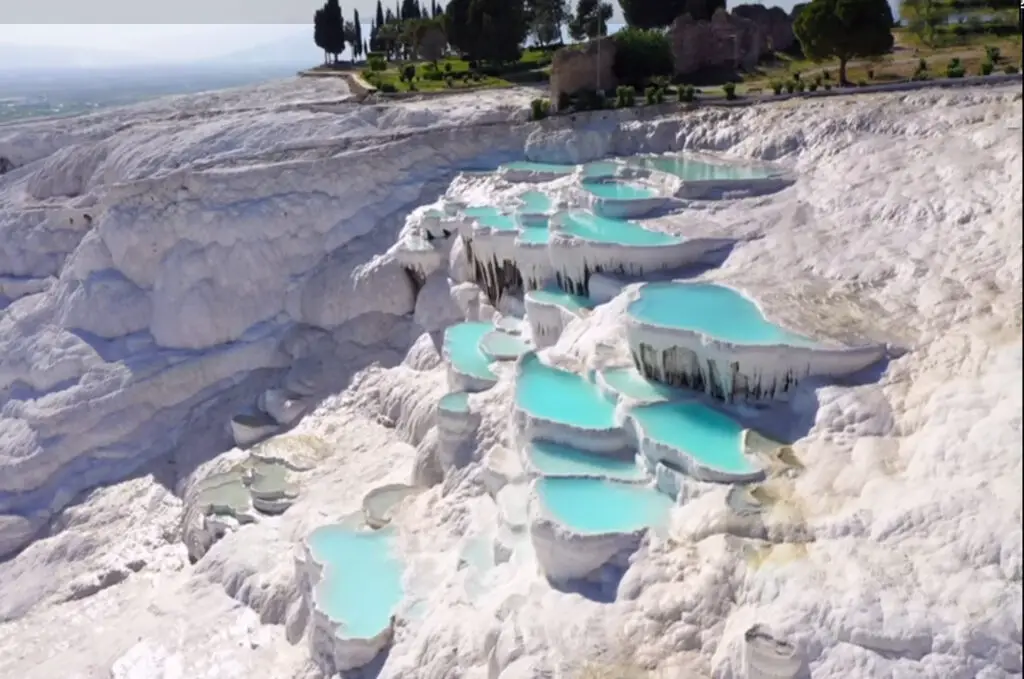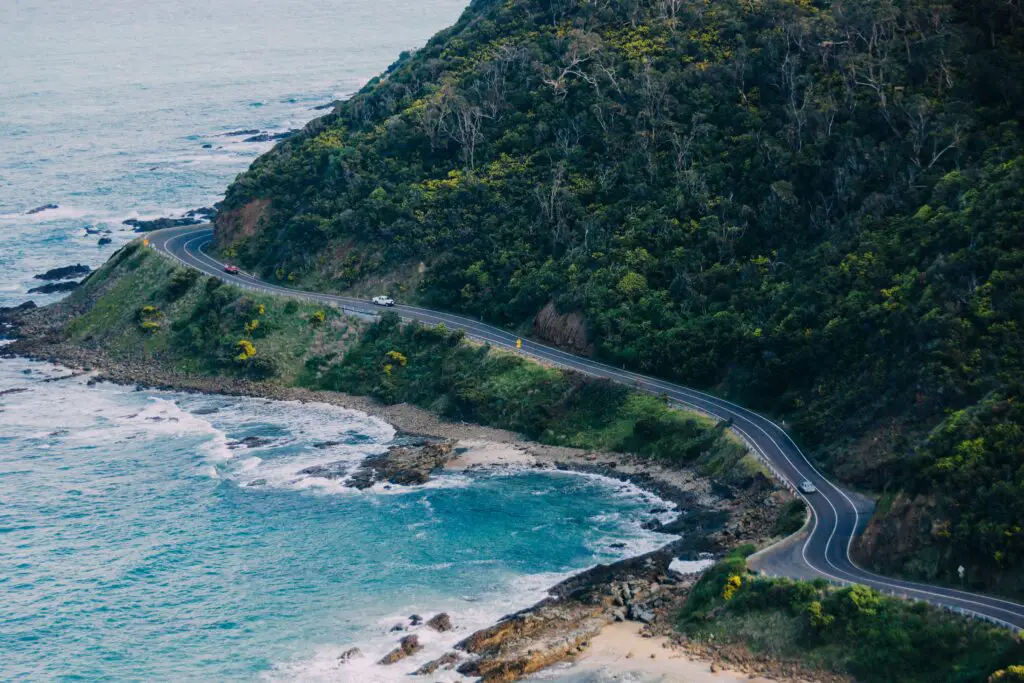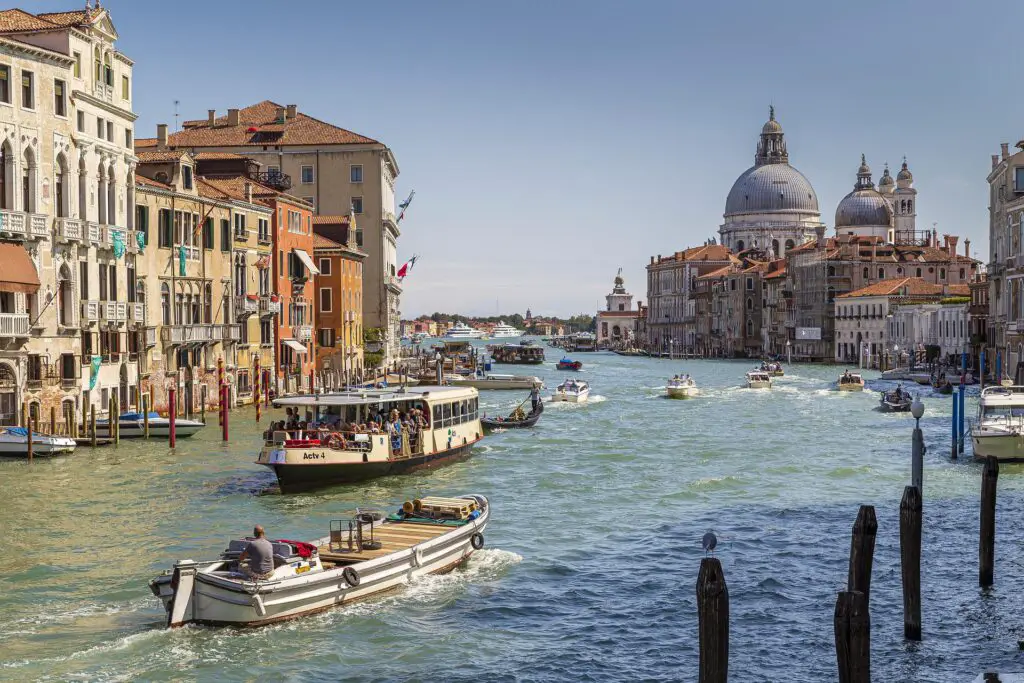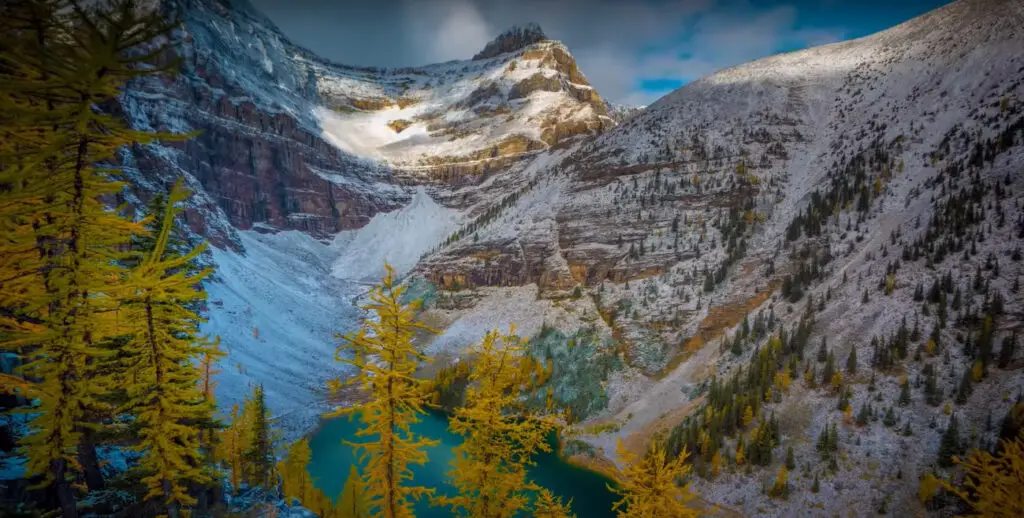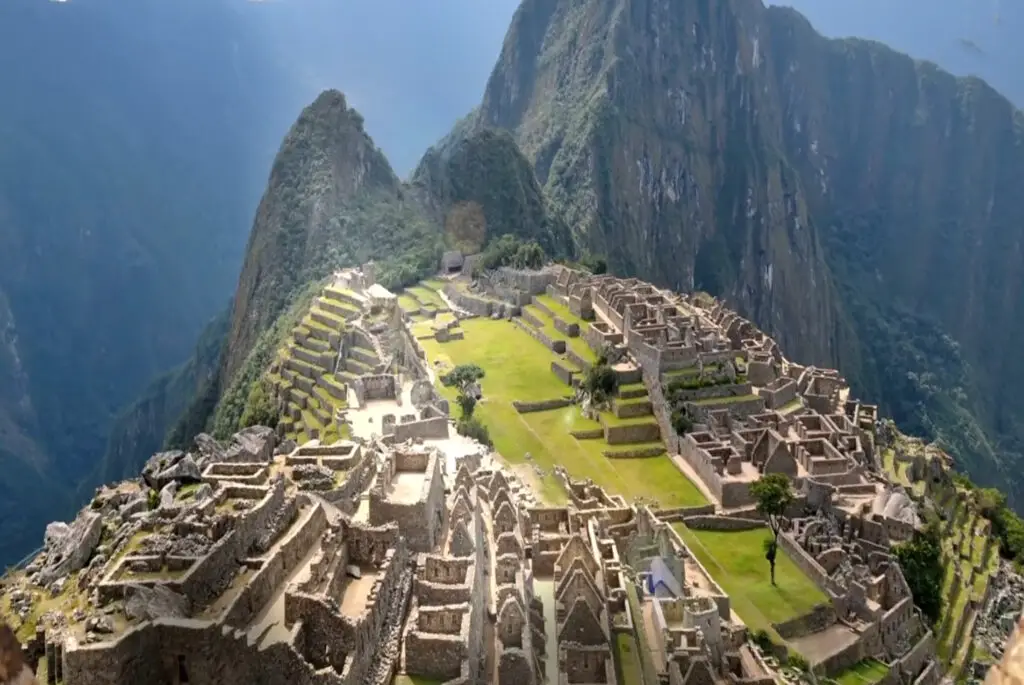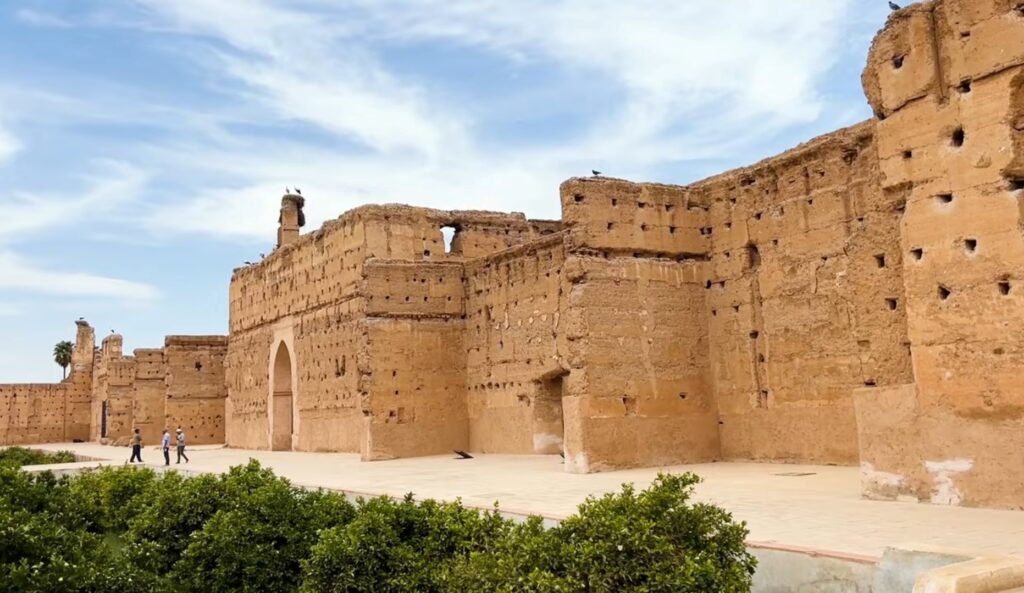Pamukkale means “cotton castle” in Turkish, and is a natural site in Denizli in southwestern Turkey. The area is known for the carbonate mineral left behind by flowing water.
Over thousands of years, this mineral has created wild water pools that are known worldwide for their healing properties.
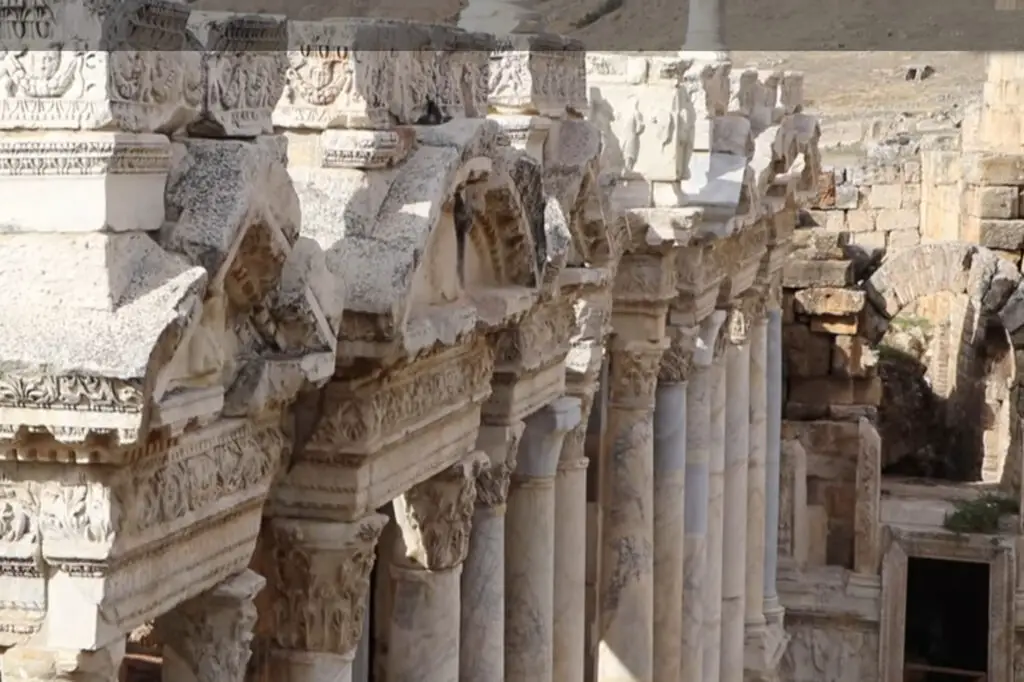
Location of Pamukkale?
Pamukkale is located 17 km from Denizli in southwest Turkey, about a 3 to 4-hour drive from Izmir, Antalya, or Fethiye.
Pamukkale Turkey is Located in Turkey’s Inner Aegean region, in the valley of the Menderes River, the place has a pleasant temperature most of the year.
Turkey is a very large country and most people who visit the country do not make it to the Pamukkale hot pools because it is located quite far from the country’s capital.
Local Legend About Pamukkale
There is a legend that tells the story of a young ugly girl who lived in a small village near Pamukkale Turkey. She was so ugly that no one wanted to be with her. She became so desperate and lonely that she wanted to kill herself.
She jumped from the highest cascade, but instead of being crushed to death, she fell into one of the pools of water.
The magical powers of the water washed away her sorrow and she became a very attractive girl.
When she got out of the pool, she met Mr. Denizli and he was so captivated by her beauty that he fell in love with her and proposed to her. They lived happily ever after.
Turks say that bathing in the pools will cure diseases such as nutritional and chronic disorders, digestive and circulatory problems, eye and skin diseases, etc. This has made Pamukkale a thriving spa resort since ancient times. Even Cleopatra bathed in the healing pools.
In addition to the healing properties of the water, the travertine pools of Pamukkale Turkey are surrounded by magnificent ruins and historical monuments.
Pamukkale and Hierapolis

Pamukkale and Hierapolis are two fascinating UNESCO World Heritage sites in Turkey. Pamukkale Turkey is famous for its incredible white travertine terraces on which sat Hierapolis, once a major center of trade and culture. The hot springs release mineral-rich water into the landscape below, creating a unique structure that looks like a cotton castle, hence the name.
Hierapolis was converted into a spa in the 2nd century BC. It became a healing center where doctors used the thermal springs to treat their patients.
In AD 17, a major earthquake left the city completely in ruins. The Romans rebuilt it and added a large amphitheater.
Thousands of people came to use the healing water pools.
Why are Pamukkale travertines white?
Pamukkale’s travertines are white due to a natural process where calcite-rich water flows from hot springs and deposits on the hills below, forming these snow-white terraces.
Are the Travertines of Pamukkale destroyed?
Pamukkale travertines are a natural phenomenon and naturally change over time. Some pools in Pamukkale lose water in them, others gain it. Although much of the water was diverted to the city for human use.
In the 1980s, the road that people used to bring tourists from the city ran right up the slope of Pamukkale’s travertines. Fortunately, this road was decommissioned in the 1990s when they created a series of man-made pools in its place. The local authorities also demolished many of the hotels built right next to the travertines and turned the area into a park.
Are Pamukkale Travertines fake?
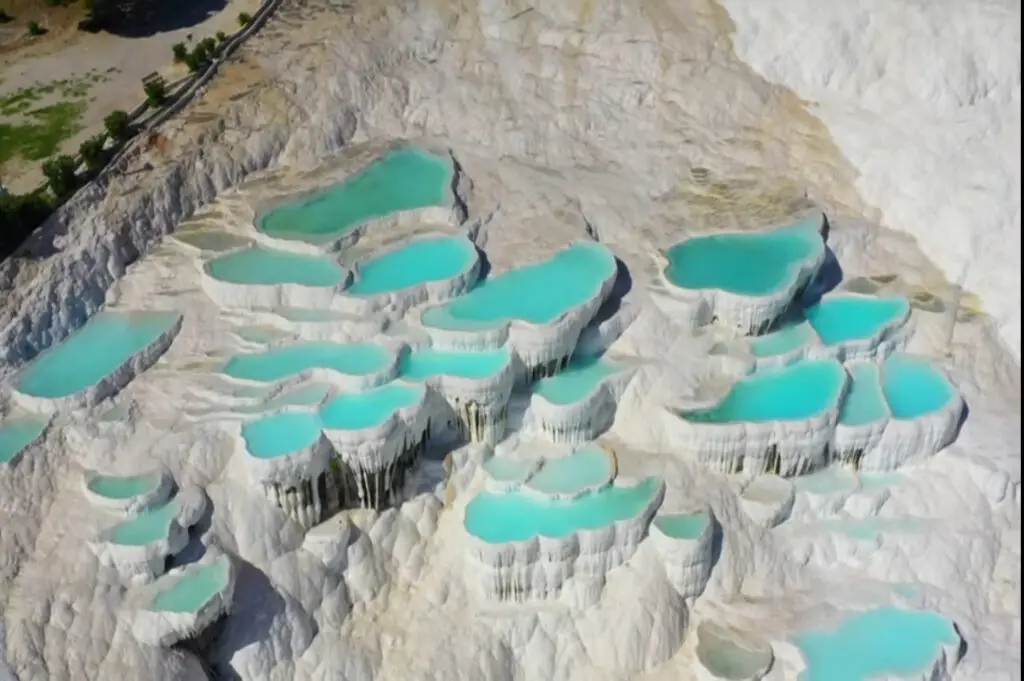
No, the Pamukkale travertines are not fake, but many photos online show them very differently. It turns out that there are many more pools of water than there are, with heavily edited colors. Many of the more prominent natural pools are not accessible and will not look like the ones in the photos.
It’s important to note that many of these dreamy videos and pictures are taken from restricted pools (those you shouldn’t enter) and from a certain angle. So no, Pamukkale travertines are not fake, but many times they are misrepresented.
Can you swim in Pamukkale?
In Pamukkale Turkey, you can only swim in selected pools created specifically for this purpose (artificial) and in Cleopatra’s pool. The reason is conservation. Travertines are exceptionally delicate and their surface can be easily destroyed, so we ask visitors to stay off the official path to avoid damaging this unusual natural formation.
Are the Pamukkale pools dirty?
The artificial pools in Pamukkale’s natural pools can be pretty dirty, especially the lower ones. When we were there, we found a lot of hair, paper, bandages, and other small trash, which goes hand in hand with the immense number of daily visitors.
Is Pamukkale Turkey a hot spring?
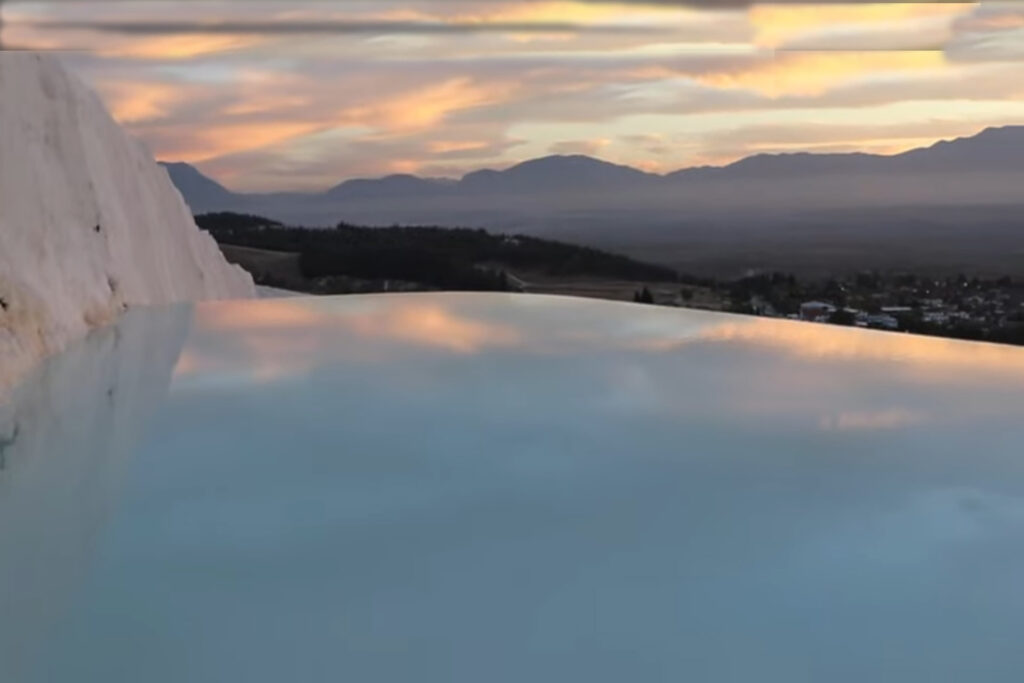
The travertines in Pamukkale are very reminiscent of a hot spring, as the hot thermal water flows down the hill and you can swim in the pools formed. There are other hot springs in the area, such as Cleopatra’s Ancient Pool or Karahayit Red Springs.
Is Pamukkale, Turkey a tourist trap?
Pamukkale Turkey is not a tourist trap as it is an incredible natural wonder worth visiting. And it’s not too expensive because with one ticket you get access to the Travertines and Hierapolis.
Is Pamukkale wheelchair accessible?
Much of Pamukkale, Turkey is wheelchair accessible, and while you can’t go swimming in the man-made pools, you can see everything from the top of the hill. You can also visit the ruins of Hierapolis, the museum, and the circular promenade around one part of the hill. The most wheelchair-accessible entrance to Pamukkale is the South Gate, as it leads a smooth walkway towards the museum and pools.
Why is Pamukkale also called Cotton Castle?
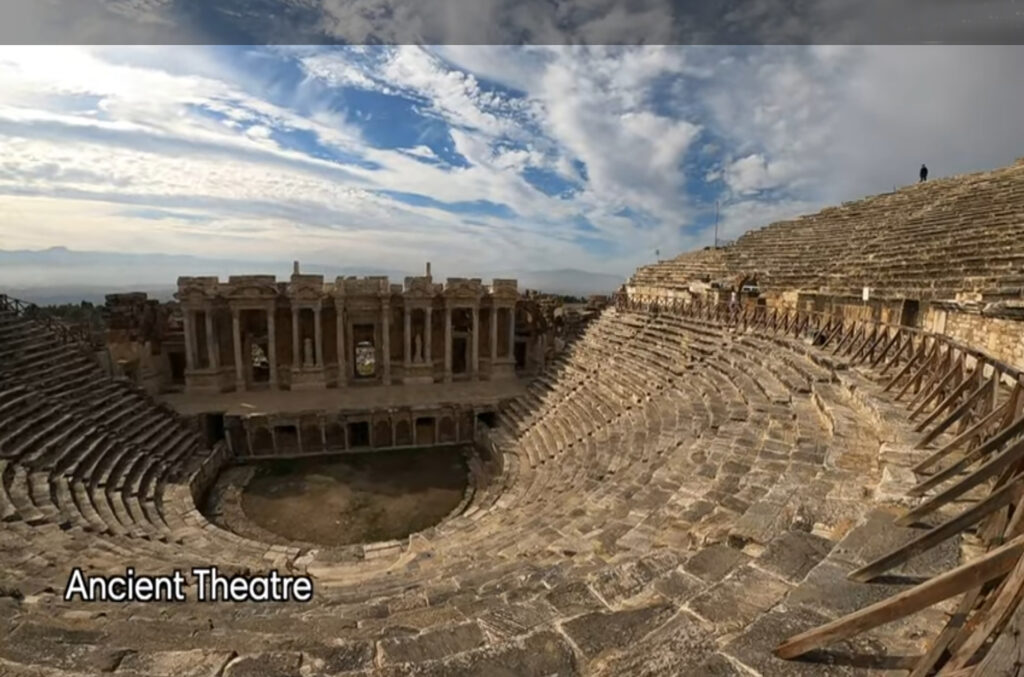
Pamukkale means “cotton castle” in Turkish, and this is because over time the hot springs released mineral-rich water into the hilly landscape below, creating a unique natural structure that looks like a cotton castle.
Things to do in Pamukkale Turkey
Pamukkale’s main attractions include:
• Pamukkale Turkey Thermal Pools
• Cleopatra’s antique pool
• Ancient Theater of Hierapolis
• Hierapolis Archaeological Museum
• Necropolis of Hierapolis
What else is there to do in Pamukkale Turkey?
In addition to visiting the Cotton Castle and Hierapolis in Pamukkale, you can also see other archaeological sites such as Aphrodisias, take a ride on the Denizli cable car, take a hot air balloon ride, or go paragliding over the travertines.
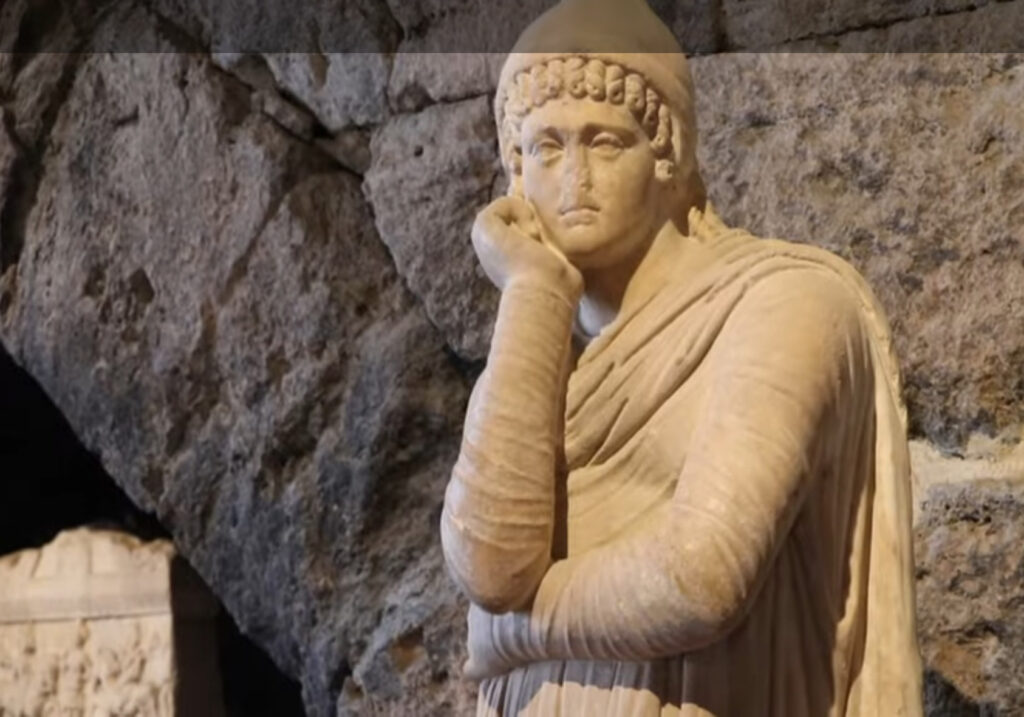
What not to do in Pamukkale, Turkey?
Please respect the rules in Pamukkale Turkey and do not go to areas that are protected. Don’t be that selfish person who will do anything just to get that perfect Instagram photo and contribute to the destruction of natural lakes.
When we were visiting, a girl went into the restricted area just to take that photo and was hurriedly told off by security.
What should I wear to Pamukkale?
Shorts, T-shirts, and sandals are the preferred choice when visiting Pamukkale, as they are ideal if you want to enjoy the sun and water while being comfortable. If you plan to swim, bring a bathing suit some sunscreen, and drinking water to Pamukkale, as it can get really hot in the warmer months.
If you visit Pamukkale Turkey out of season, take something warm with you as mornings and evenings can be chilly, especially if it’s not a sunny day.
Tips
• Bring a change of shoes bag with you as you have to be barefoot when walking the slope.
• Toilets and changing rooms are available at the top of the Pamukkale pools where most people bathe.
• When visiting Pamukkale in the colder months, the ground will be icy in the morning, especially at the bottom.
• The wading pools have a lot of sediment on the bottom and it can be quite slippery to walk in, so be careful if you don’t want to end up in the water. Also, the ground isn’t the easiest to walk on barefoot in some parts, so take it slow there.
• Note that if you visit Hierapolis and walk to the north entrance and walk through the entire necropolis, you will also have to return if you entered/parked in the south section. This means that you will walk approximately 5 km in total. We hitchhiked back into town where we parked the car. Although there is a bus that runs through the north entrance, you may also find a taxi or two in season.
• If you go to the north entrance and want to go back to the pools, there is a shuttle bus/golf cart that can take you back.
Best time to go to Pamukkale, Turkey
The best time to visit Pamukkale is in spring (April-May) and autumn (September-October), with pleasant weather and minimal tourists, as Pamukkale is very crowded in the summer months.
On the other hand, if you visit Pamukkale in the summer (June-August), it is best to come as early as possible in the morning if you want to avoid the crowds.
Spring and autumn in Pamukkale should still be a pleasant time to visit as we were there at the end of October and the daytime temperature was still very high and the water warm.
If you come to Pamukkale early in the morning during opening hours as we did, be prepared to get cold feet as you will have to walk barefoot on cold rock. If you enter from the city side, it will take a few minutes to get to the part where the running water warms up.
How long should I spend in Pamukkale?
You can spend half a day or a full day in Pamukkale and Hierapolis, but an overnight stay is much more suitable if you want to visit some of the surrounding places as well. Otherwise, day trips to Pamukkale operate from Izmir, Fethiye, Kas, and Antalya.
Is Pamukkale worth the trip?
Absolutely Yes, Pamukkale deserves everyone’s visit because of the natural phenomenon of travertines and hot springs, its location full of history, culture, and beautiful scenery in general.
Even though we knew before the visit that it would not look exactly like the photos, we still enjoyed the visit very much and did not regret coming to Pamukkale. Just set your expectations and don’t expect those dreamy Instagram shots because that’s not the case. At least not where you’re allowed to go.
The lower town entrance in Pamukkale is the most popular as it is the easiest to access and you can quickly walk to the pools. However, it does not have that many parking spaces available.
Pamukkale’s north entrance (by the necropolis) is the farthest, so if you’re just going for the pools, it’s not the right choice because you have to walk about 2 kilometers (20 minutes) to them and then walk another 2 kilometers back.
The south entrance to Pamukkale is excellent if you are coming by transport, as it has a large parking space and you can reach the upper, warmer pools in a few minutes.
How to get to Pamukkale, Turkey
Pamukkale is one of Turkey’s most visited tourist attractions and is easily accessible from other places in Turkey such as Istanbul, Izmir, Antalya, Fethiye, and Ankara.
Pamukkale can be reached by car in about 4 hours from Izmir, 4 hours from Fethiye, 2.5 hours from Kas, and 3.5 hours from Antalya.

